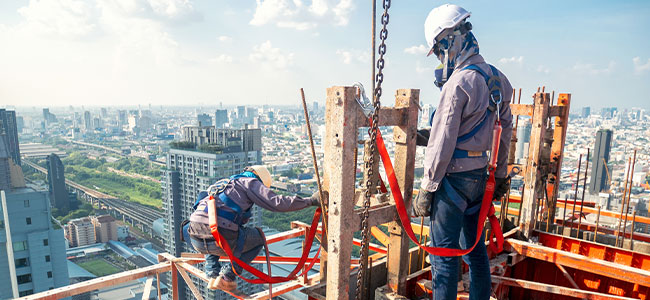
Supporting Your Team: 6 Tips for Recovery and Adjustment After a Suspension Trauma Incident
When an incident happens, a quick response plan is the key to minimizing the downsides of suspension trauma.
- By Mia Barnes
- Jan 22, 2024
There's always the risk of suspension trauma for those whose work involves heights and safety harnesses. When an incident happens, a quick response plan is the key to minimizing the downsides. It’s a leader’s responsibility to ensure the affected team member can return to their job promptly after being rescued. Learn some valuable tips on how to do so.
Signs of Suspension Trauma
Part of the rescue plan and the role of a safety manager is recognizing the signs of suspension trauma. Some of them are observable, making it apparent when a worker is having a problem. Then take appropriate action to address the issue. Look for these presyncope symptoms:
- Light-headedness
- Weakness
- Fatigue
- Dizziness
- Excessive sweating
- Nausea
- Changes in vision
- Numbness in the extremities
These symptoms can cause fainting in as little as seven minutes of being suspended. The longer they stay in the air, the higher the risk of serious injury. So an immediate response is critical.
Serious Consequences of Disrupted Circulation
The pressure of the safety harness on the legs can inhibit blood circulation in three major points: the legs, heart and brain. This disruption can lead to venous pooling, which occurs when the blood accumulates in the lower extremities and damages the muscle tissue, kidney and other vital organs. Moreover, the heart can go into shock and extreme anxiety, subsequently affecting the blood delivered to the brain.
Recovery Tips After an Incident
After the rescue, safety managers must provide physical and mental support so the worker can rapidly return to normal health. Here are some tips.
1. Convince Them to Seek Medical Attention
Suspension trauma cases should be treated like any other kind of traumatic injury. So seeking medical attention is a priority. Even if they were taken down promptly, encourage the worker to consult a health care professional if they refuse to see one. This way, they can be assessed for potential complications and receive immediate treatment.
2. Ensure They Follow the Physician’s Medical Order